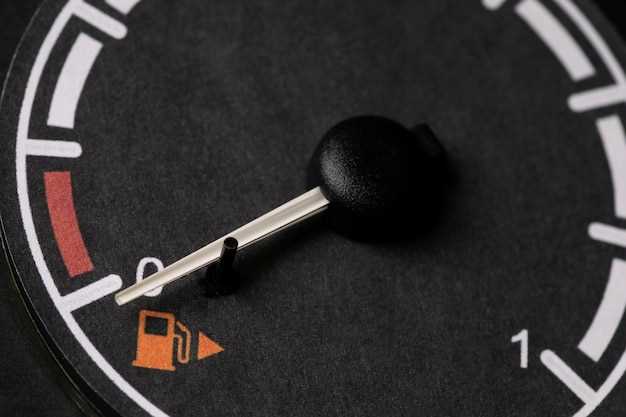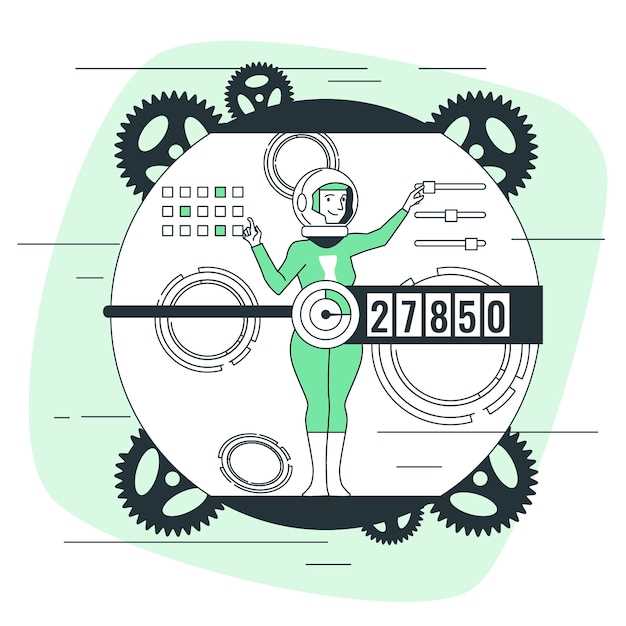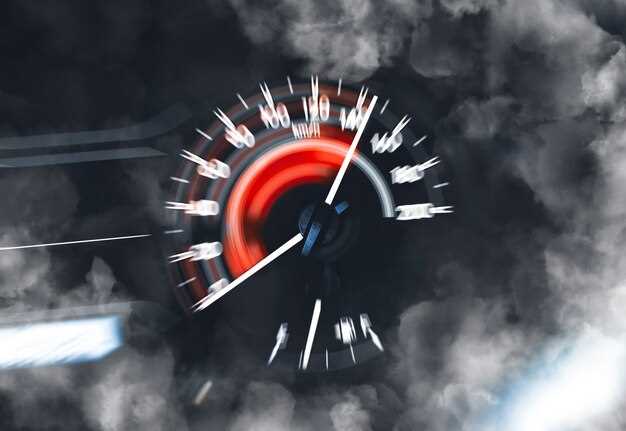
When it comes to achieving the best performance in quarter-mile racing, understanding the significance of gear ratios is crucial. The relationship between the engine’s power output and the wheels’ rotation can be finely tuned through specific gear ratios, allowing racers to optimize acceleration and maximize speed. In this high-stakes sport, every fraction of a second counts, making the selection of the right gear ratios a vital component of race strategy.
The term “drag” refers to the resistance that vehicles encounter as they accelerate down the track, which makes the choice of gear ratios even more critical. A well-calibrated gear setup can diminish drag effects, enhance torque delivery, and help maintain a powerful thrust throughout the race. In this article, we will explore various gear ratios tailored for different types of vehicles, ensuring that racers can make informed decisions that will elevate their quarter-mile performance.
From high-performance sports cars to finely-tuned dragsters, understanding the mechanics of gear ratios will allow drivers to set their vehicles up for success. The right ratios can be the difference between a record-breaking run and a disappointing finish, so let’s delve into the optimal configurations that can help achieve the fastest quarter-mile racing times.
Understanding Gear Ratios: The Basics for Drag Racing
Gear ratios are crucial for optimizing performance in drag racing. They determine how many times the driveshaft turns for each rotation of the wheels, directly influencing acceleration and top speed. In simple terms, a lower gear ratio, such as 3.23:1, provides better acceleration by allowing the engine to reach higher RPMs quickly. This is advantageous in short races like a quarter-mile, where quick acceleration is paramount.
Conversely, a higher gear ratio, such as 4.56:1, can enhance top speed but may limit acceleration due to the engine not reaching its optimal power band quickly enough. The choice of gear ratio depends largely on the vehicle’s power band, weight, and tire size. For instance, a car with a high-torque engine might benefit from a lower gear ratio to maximize traction and performance off the line.
Moreover, gear ratios can be modified through differential changes, transmission choice, or even changing tire sizes. Knowing the specific characteristics of your vehicle and the intended racing conditions is essential. A well-thought-out gear ratio strategy can make the difference between winning and losing in drag racing.
How Gear Ratios Affect Acceleration in Quarter-Mile Runs

In quarter-mile racing, the choice of gear ratios plays a critical role in determining a vehicle’s acceleration and overall performance. Gear ratios define the relationship between the engine’s RPM and the wheels’ rotation, directly impacting how power is delivered to the ground. Optimal selections can enhance traction and speed, translating to improved lap times.
A lower gear ratio (higher numerical value) can provide quicker acceleration off the line. This setup allows the engine to reach its power band more rapidly, making it well-suited for drag starts. However, while lower ratios excel in initial burst, they often result in a higher engine RPM at top speed, which can limit the overall speed during a quarter-mile run.
Conversely, higher gear ratios (lower numerical value) are designed to maintain higher speeds at lower RPMs, potentially reducing engine strain. This arrangement can be beneficial for cars aiming for speed over distance, as they may thrive in longer tracks rather than short bursts. The challenge lies in balancing gear ratios to optimize both initial acceleration and terminal velocity.
The interaction between gear ratios and engine characteristics is crucial. Torque delivery, engine power curves, and vehicle weight all contribute to how effectively a car accelerates. For instance, a high-revving engine may benefit from a more aggressive gear setup, while a torque-heavy engine might perform better with a slightly higher gear ratio to maximize power delivery at higher speeds.
Implementing the right ratios, tailored to vehicle specifications and track conditions, can transform performance. It requires careful analysis of acceleration data, testing, and fine-tuning to achieve the ideal balance that maximizes performance in quarter-mile races.
Choosing the Right Differential Ratio for Your Vehicle

When it comes to optimizing your vehicle for quarter-mile racing, selecting the appropriate differential ratio is crucial for enhancing performance. The differential ratio determines how many times the driveshaft turns in relation to the rotation of the wheels. This ratio directly influences acceleration, top speed, and overall drag performance.
A higher differential ratio means that the wheels will rotate more times for every turn of the driveshaft, resulting in quicker acceleration. However, this may also limit the top speed of the vehicle. Conversely, a lower ratio provides improved top speed at the cost of slower acceleration. It’s essential to strike a balance based on your specific racing needs and vehicle setup.
Generally, vehicles built for drag racing benefit from a higher differential ratio, as the primary goal is to achieve the best possible start and acceleration off the line. The following table summarizes common gear ratios and their typical applications in quarter-mile racing:
| Differential Ratio | Acceleration Profile | Top Speed | Best Use Case |
|---|---|---|---|
| 3.08 – 3.31 | Moderate Acceleration | Higher Top Speed | Street Cars |
| 3.55 – 3.73 | Good Acceleration | Balanced Speed | Performance Cars |
| 4.10 – 4.56 | Fast Acceleration | Limited Top Speed | Drag Racing Vehicles |
| 5.00+ | Very Fast Acceleration | Very Limited Top Speed | Specialized Drag Racing Builds |
Ultimately, the right differential ratio for your vehicle will depend on various factors, including engine power, tire size, and the specific characteristics of the track. Test and research are key components in finding the optimal gear ratio that complements your racing goals, ensuring that your vehicle maintains peak performance throughout the quarter-mile. Always consider the trade-offs to achieve a set-up that best suits your racing strategy.
Evaluating Tire Size Impact on Gear Ratio Selection
Choosing the right tire size is crucial for optimizing gear ratios in quarter-mile racing. The interaction between tire size and gear ratios directly affects vehicle performance, acceleration, and top speed.
When changing tire sizes, it’s essential to consider how this impacts the overall gear ratio. Here are key factors to evaluate:
- Effective Final Drive Ratio: A larger tire increases the effective final drive ratio, which may reduce acceleration but improve top speed. Conversely, a smaller tire lowers the ratio, enhancing acceleration at the cost of top speed.
- Launch Characteristics: Larger tires can lead to increased traction but may require adjustments to the gear ratios to prevent bogging down during launches. Smaller tires often result in quicker acceleration but can lead to tire spin.
- RPM Range: The ideal gear ratios depend on the engine’s power band. Taller gears with larger tires may allow an engine to stay in its power band longer during a race, which maximizes performance.
To tailor gear ratios effectively, consider the intended racing conditions and tire specifications:
- Analyze Tire Diameter: Calculate how the diameter influences the vehicle’s speed and RPM at the finish line.
- Test Different Ratios: Experiment with various gear setups to find the optimal match for the selected tire size. Data from test runs can guide ratio adjustments.
- Performance Monitoring: Use telemetry to gather data during runs, providing insight into how different tire sizes and ratios perform in real time.
Ultimately, selecting the best gear ratios for quarter-mile racing requires a comprehensive understanding of how tire size influences overall vehicle dynamics. By carefully evaluating these factors, racers can enhance their performance and achieve faster times on the track.
Testing and Tuning: Finding Your Ideal Gear Ratio
Determining the optimal gear ratios for quarter-mile racing is essential for maximizing performance and minimizing elapsed time. This process involves a systematic approach to testing and tuning your vehicle’s drag capabilities. Understanding how different gear ratios affect acceleration and engine RPM is crucial.
Start by selecting a baseline gear ratio that is commonly used in your class of racing. This baseline provides a point of comparison as you make adjustments. Consider experimenting with both lower and higher ratios to identify how they influence your car’s launch and overall speed down the track.
During testing, utilize drag racing events or controlled environments to gather data. Timing your runs with various gear ratios allows you to see real-time performance changes. Look for improvements in reaction times and final speed at the quarter-mile mark. Effective data logging tools can help track these statistics for thorough analysis.
Tuning involves not just changing gear ratios, but also adjusting other factors such as tire pressure, suspension settings, and weight distribution. This holistic approach will ensure that the new gear ratio works harmoniously with your vehicle’s complete setup. Keep in mind that what works best on the strip may not be ideal for everyday driving; hence, focus on finding a balance geared towards racing.
Finally, document all experiments meticulously. Comparing the outcomes from different gear ratios will reveal trends and help refine your setup. Engaging with fellow racers or online communities can also provide insights or alternative approaches to tuning your gear ratios for peak drag performance.
Real-World Examples of Gear Ratios Used in Successful Drag Races
Gear ratios play a crucial role in maximizing the performance of a vehicle during drag races. The right combination can drastically reduce quarter-mile times by optimizing acceleration and power delivery. Let’s explore some successful examples from the drag racing scene that highlight effective gear choices.
One notable example comes from the Chevrolet Camaro SS, which has become a favorite among drag racers. This car often employs a gear ratio of 4.10:1 in its rear differential. This setup allows for quick acceleration off the line, crucial for achieving optimal drag performance. The increased torque multiplication from these gears provides a significant advantage when launching against competitors.
An import tuner that has gained fame in the drag racing world is the Nissan GT-R. Many of these vehicles utilize a 3.73:1 gear ratio, which strikes a balance between acceleration and top-end speed. This ratio is particularly effective for tuning cars that require a strong performance over the quarter-mile while maintaining the ability to reach higher speeds without hitting a rev limiter too early.
The Dodge Challenger Demon is another prime candidate for studying optimal gear ratios. Equipped with a 3.09:1 final drive, it maximizes off-the-line traction while allowing for impressive speed through the latter stages of the race. The Demon’s setup showcases how a lower gear ratio can still yield excellent results when paired with a high-output engine capable of sustaining power.
For the Ford Mustang, a common choice among drag racers is the 3.55:1 rear end ratio. This gear combination allows for rapid acceleration while providing stability at higher speeds. Mustangs using this configuration have consistently showcased strong quarter-mile times, demonstrating the performance benefits of selecting the right gear.
Lastly, the Toyota Supra has become notorious for its potential in the drag racing community. Many tuners opt for a 3.50:1 ratio, striking a balance between initial burst and sustained power. This ratio is especially effective when integrated with significant engine modifications, allowing the Supra to harness its full potential on the drag strip.
In summary, successful drag racing often hinges on selecting the right gear ratios. Real-world examples, from the Chevrolet Camaro to the Toyota Supra, illustrate how various ratios can significantly impact performance and contribute to achieving the fastest quarter-mile times possible.






